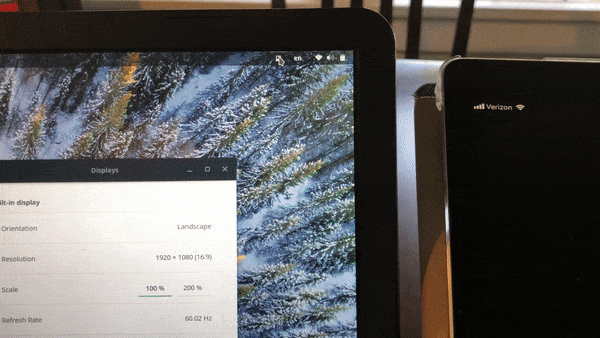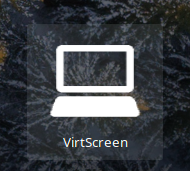| data | ||
| package | ||
| virtscreen | ||
| .gitignore | ||
| .travis.yml | ||
| Dockerfile | ||
| launch_env.sh | ||
| LICENSE.txt | ||
| Makefile | ||
| MANIFEST.in | ||
| README.md | ||
| setup.py | ||
| virtscreen.desktop | ||
VirtScreen
Make your iPad/tablet/computer as a secondary monitor on Linux.
VirtScreen is an easy-to-use Linux GUI app that creates a virtual secondary screen and shares it through VNC.
VirtScreen is based on PyQt5 and Twisted in Python side and uses x11vnc and XRandR.
How to use
Upon installation (see Installing section to install), there will be a desktop entry called VirtScreen
Or you can run it using a command line:
$ virtscreen
Installation
Universal package (AppImage)
Download a .AppImage package from releases page. Then make it executable:
chmod a+x VirtScreen-x86_64.AppImage
Then you can run it by double click the file or ./VirtScreen-x86_64.AppImage in terminal.
Debian (Ubuntu)
Download a .deb package from releases page. Then install it:
sudo apt-get update
sudo apt-get install x11vnc
sudo dpkg -i virtscreen_0.2.4-1_all.deb
rm virtscreen_0.2.4-1_all.deb
Arch Linux (AUR)
There is virtscreen AUR package available. Though there are many ways to install the AUR package, one of the easiest way is to use yaourt AUR helper:
yaourt virtscreen
Python pip
Although not recommended, you may install it using pip. In this case, you need to install the dependancies manually.
You need x11vnc, xrandr. To install (e.g. on Ubuntu):
sudo apt-get install x11vnc # On Debian/Ubuntu, xrandr is included.
After you install the dependancies then run:
sudo pip install virtscreen

